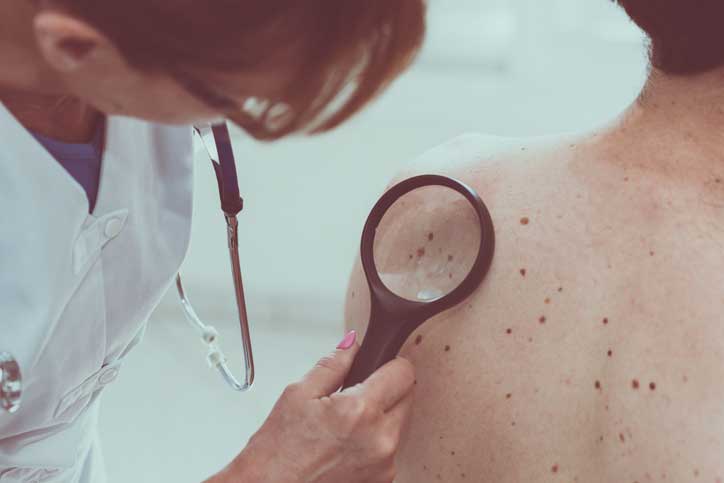Skin Mole Mapping

It’s perfectly normal to have up to 60 moles by the time you’re 25. You may have had a few when you were born, but most moles develop gradually into adulthood. Most moles are simply cosmetic changes to the skin and will never cause problems. However, keeping an eye on new and changing moles can help you catch skin cancer early. The trick to knowing every inch of your body is to print out a body mole map and record what you see over time.
Begin with a Skin Cancer Self-Examination
While it’s recommended that you see a dermatologist for professional skin cancer screenings once a year, this is something you should also do at home once a month. The most common places for skin cancer to develop include the face, chest, arms, calves, and other places that receive the most sun exposure.
Still, skin cancer can develop anywhere, so be sure to take a good look at every part of your body during a skin self-exam. Remember to check your underarms, between your fingers and toes, the palms of your hands, the soles of your feet, and your scalp. Use a full-length mirror and a hand mirror or get help from another person to examine hard-to-see areas.
Record Your Moles
The American Academy of Dermatology has a skin cancer body mole map you can download for free. You’ll see that the chart includes the front and back of your body, your head from four different angles, and the bottoms of your feet.
As you examine your skin, mark your moles in the appropriate places on the map and number them as you go. Then, there’s a place to document the characteristics of each mole for your records.
Print out 12 copies of the body mole map for each person in your family so everyone can fill it out once a month for a year. This makes it easy to see which moles are changing or taking on concerning characteristics as the months go by.
Know the Warning Signs of Skin Cancer
Becoming intimately familiar with the locations and traits of your moles is important because cancerous moles have unique characteristics. If you notice any of ABCDEs of skin cancer, call a dermatologist right away. These include:
- Asymmetrical moles, where one half looks different from the other
- Borders that are irregular, scalloped, or poorly defined
- Colors that vary from one part of the mole to another
- Diameter that exceeds the size of a pencil eraser (6mm)
- Evolving moles that change color, shape, or size relatively rapidly
At Swinger-Woseth Dermatology, we have more than 30 years of experience providing skin cancer treatment to Utah residents. Our team of board-certified dermatologists can provide the effective, compassionate service you’re looking for. If you have any troubling moles, or you’re looking for dermatology services in Salt Lake City, please contact Swinyer-Woseth Dermatology online or call us at 801-266-8841.
